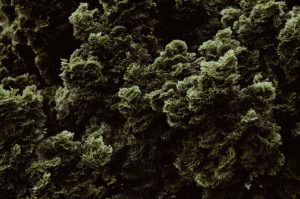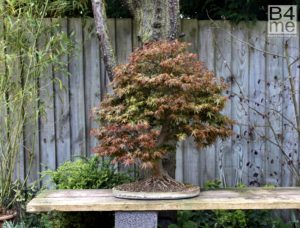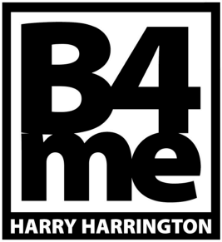/
To the beginner at bonsai there would seem to be a bewildering number of tools available. However a large number of these tools are designed to aid the bonsai enthusiast who is carrying out more advanced techniques.
For your first attempts at bonsai practise, where basic maintenance is essentially all that is being practised, it is possible to use basic tools that will do the job almost as well as specialist tools. For a very basic tool kit, the following items can be used;
A pair of sharp scissors, wire cutters, secateurs (preferably the ‘by-pass’ not the ‘anvil’ type), small nail scissors for fine work and either a pointed piece of wood (chopstick) for combing out roots.
When buying your first Japanese tools, it is possible to buy items either individually or as part of small kits. Prices can vary greatly but it is recommended that you purchase the best quality tools that you can be afford. Cheap tools tend to be of Chinese origin and are often made from mild steel which deteriorate relatively quickly and can quickly lose their edge, requiring frequent sharpening. Though Japanese-made tools are dearer, they are generally made from better quality metals and can often last a lifetime.
All tools should be kept reasonably well-maintained; not only does regular sharpening increase the life of your tools, but blunt and dirty tools will not cut through wood well and tend to ‘crush’ rather than cut. Plant sap collects on tool-blades easily, turning them black and this can be removed with a wire brush or abrasive paper.
After many years practising bonsai, there are 6-7 tools that I would describe as essential and I could not live without. These are the tools that I will always select from my toolbox when I conduct a workshop or to work on someone’s tree.
Long Handled Bonsai Scissors
Knob Cutter
Side Cutters
Jin Pliers
Wire Cutters
Draw Knife
Tool sharpener
%20450.jpg)
Long Handled Bonsai Scissors
This pair of long-handled scissors have lasted me 15 years of almost daily use and I find are preferable to the short-handled bonsai scissors often seen for sale. Essential for all fine and detailed shoot and leaf work. Must be kept razor sharp to ensure a fine cut and to avoid crushing new shoots.
I also carry a pair of very sharp kitchen scissors for heavier work such as cutting roots.
%20450.jpg)
From left to right: Large Knob-Cutters 180mm, Small Knob-Cutter 90mm, Branch-Cutter 220mm
Side- or Branch-Cutter and Knob-Cutters
It is essential that branches are routinely removed using branch or knob-cutters. Both tools cut away the branch leaving a small indentation so that the resulting wound heals flat. Most enthusiasts use branch cutters for the majority of their branch pruning however I have always preferred to use knob-cutters partly because they are more versatile.
Of the 3 tools I have, it is the small 90mm knob-cutters I use for the majority of the time followed by the side cutters. The narrower blades of the small knob-cutters cutting through wood of any strength with ease. For branches (or trunks) thicker than 90mm, I simply make repeated cuts with the smaller blades.
%20450.jpg)
Wire cutters (left) and Jin Pliers (right)
Wire cutters really are recommended as they cut cleanly through wire that is close to bark without causing any damage and the short blades make cutting the thickest bonsai wire easy. Jin pliers are designed for stripping away fibres of wood when creating a jin from a branch. However they have endless uses when working on bonsai.
%20450.jpg)
Tool-sharpener (left) and Draw Knife (right)
Diamond tool sharpeners as pictured above are easy to locate in hardware stores and their small size (6mm) and rounded surface on one side makes them ideal for sharpening all bonsai tools and knob/side cutters in particular.
A draw-knife (also known as a bark-stripper) is an extremely useful tool with a multitude of uses and will strip bark away from wood in seconds.
Useful Accessories
As well as a basic tool kit it is worth investing in some essential accessories which are frequently required for the practice of bonsai.
A cheap black turntable is a worthwhile initial investment; it allows the bonsai to be easily and repeatedly turned while being worked on.
I no longer consider cut-paste or wound sealant to be necessary and do not apply them to fresh pruning wounds when I am working although many older bonsai publications and many enthusiasts will describe its importance.
It is however important to apply Vaseline (Petroleum Jelly) to the fresh wounds of all resinous trees such as Pine, Spruce and Larch as these species will bleed heavily. Petroleum Jelly can be applied to wounds on all species as effectively as using a traditional bonsai wound-sealant.
Do not use a proprietary bonsai sealant as ordinary garden-tree wound sealant can be difficult to remove once hardened and can cause further damage.
At repotting time soil sieves are needed to remove fine particles and dust from newly mixed bonsai soils. Root hooks are often used for removing old soil from around bonsai roots and for combing out though I would personally recommend using a mixture of hands and a chopstick, as these cause less damage when potting on new material for the first time and for repotting
Drainage Mesh is essential for stopping bonsai soils from dropping out through drainage holes in bonsai pots.
Additionally, a small knife and a small hand saw (with large teeth, fine-tooth saws will not cut through live wood effectively) are items that though not essential, are useful items to add to the toolbox.
Wire
Wire is commonly used in bonsai to allow accurate shaping and positioning of branches and trunks. It is also needed for anchoring in newly potted trees and drainage mesh.
Custom made aluminium wire is readily available from bonsai outlets and occasionally garden centres. It is worth investing in three or four different gauge wires that should be able to deal with shaping a variety of branch and trunk thickness. I would recommend purchasing 1mm, 1.5mm and 2mm gauges at first.
The Japanese traditionally use copper wire for its superior holding power though it is now becoming less popular and is harder to source commercially.
It should be noted that plastic-coated wire available from garden centres and a number of other alternatives to bonsai wire are not only unsightly, have little ‘holding’ power but also contain metals that can cause severe damage (sometimes with fatal consequences) to trees when they come into contact with the cambium layer, the ‘living tissue’ of the tree.
%20450.jpg)
Anodised Aluminium Bonsai Wire.




